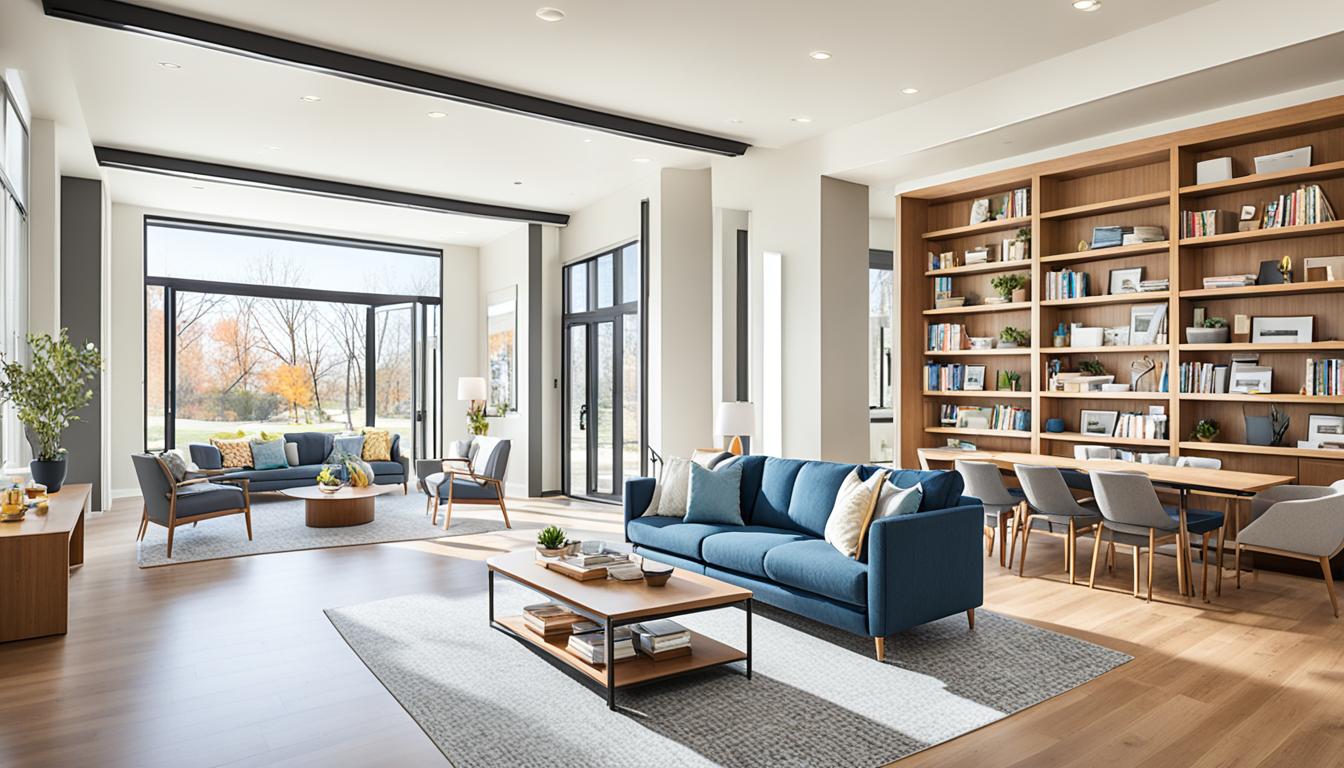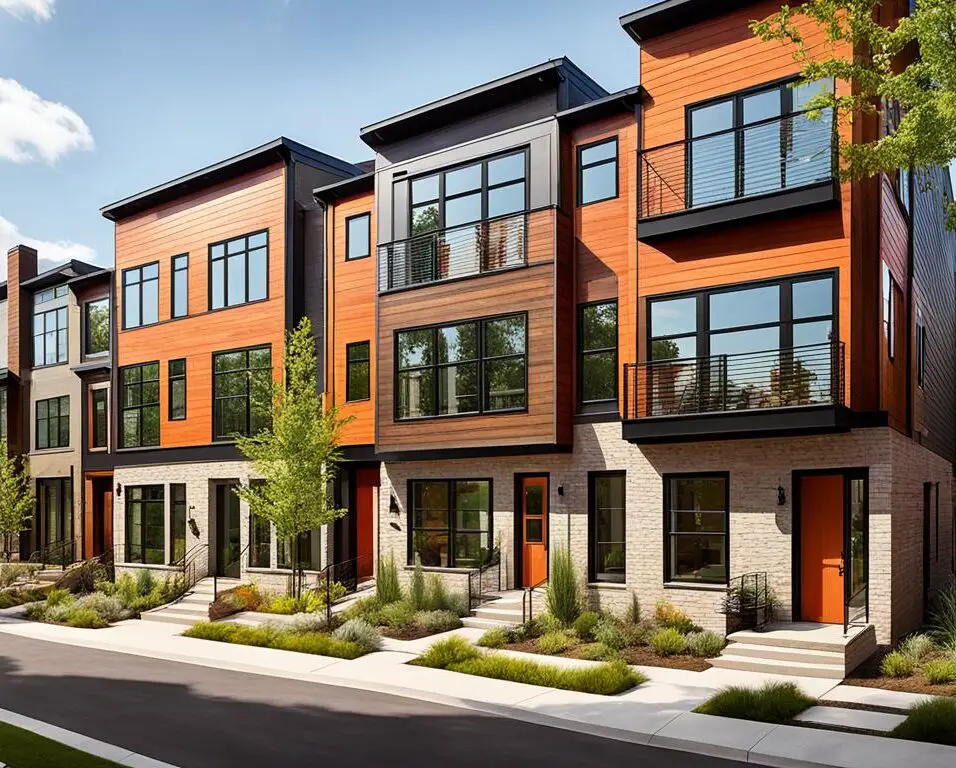Barrier-Free Home Design: Creating Inclusive Spaces for All
Barrier-free home design, also known as universal design, is an essential aspect of creating inclusive spaces that cater to people of all abilities. This design philosophy focuses on removing physical barriers and ensuring that everyone can navigate and use the space with ease and dignity.
Research has shown that barrier-free home design offers numerous benefits, including improved safety, increased independence, and enhanced quality of life. By incorporating accessible features into our homes, we can create an environment that fosters inclusivity and meets the diverse needs of individuals.
Key Takeaways:
- Barrier-free home design, also known as universal design, aims to create inclusive spaces for people of all abilities.
- Key elements of barrier-free home design include accessible entrances, open floor plans, wide doorways, reachable fixtures, grab bars, and non-slip surfaces.
- Barrier-free home design is crucial in addressing the needs of the aging population and promoting disability inclusion and social equity.
- Creating barrier-free homes allows individuals to maintain their independence and quality of life as they age.
- Barrier-free design benefits not only individuals with disabilities but also their families and caregivers who may need to assist them.
Key Elements of Barrier-Free Home Design
Barrier-free home design seeks to create inclusive and accessible spaces for people of all abilities. Incorporating key elements into the design ensures that individuals can navigate their homes safely and comfortably. Here are the essential components of barrier-free home design:
1. Accessible Entrances:
Accessible entrances are crucial in providing easy and equitable access to homes. This includes ramps or zero-step entryways that eliminate the need for stairs. By removing physical barriers at the entry point, individuals with mobility challenges can enter and exit their homes independently.
2. Open Floor Plans:
Open floor plans are a hallmark of barrier-free home design. By eliminating unnecessary walls and obstructions, the space becomes more easily navigable. This layout also promotes better communication and interaction, fostering a sense of inclusivity within the home.
3. Wide Doorways:
Wide doorways accommodate individuals who use mobility devices such as wheelchairs or walkers. These broader entryways provide seamless transitions between rooms, allowing for unrestricted movement throughout the home.
4. Reachable Fixtures:
Inclusive home design ensures that fixtures, such as light switches, thermostats, and electrical outlets, are positioned at reachable heights. By placing these elements within easy reach, individuals with limited mobility can maintain independence and perform daily tasks without assistance.
5. Grab Bars:
Grab bars are essential features in bathrooms and areas where support is needed. These secure handholds provide stability and assistance when standing up or sitting down, promoting safety for individuals with mobility challenges.
6. Non-Slip Surfaces:
Non-slip surfaces, particularly in bathrooms and high-traffic areas, prevent falls and ensure safety for everyone in the home. These surfaces minimize the risk of accidents, offering stability and peace of mind.

Creating barrier-free homes with accessible entrances, open floor plans, wide doorways, reachable fixtures, grab bars, and non-slip surfaces enhances the quality of life for individuals of all abilities. By removing physical barriers, these key elements enable equitable access, safety, and independence within the home.
The Importance of Barrier-Free Home Design
Barrier-free home design is of utmost importance in today’s society due to a variety of factors. One significant driver is the aging population, as more individuals choose to age in place and maintain their independence. By implementing accessible and inclusive designs in homes, individuals can enhance their quality of life and continue living independently as they age.
Moreover, barrier-free design plays a crucial role in promoting disability inclusion and social equity. It ensures that individuals with disabilities have equal access to housing and can actively participate in their communities. This not only benefits the individuals themselves but also their families and caregivers who provide support and assistance. By creating barrier-free homes, we foster a sense of belonging and dignity for all individuals, regardless of their physical abilities.
Furthermore, barrier-free home design supports the concept of independent living, allowing individuals to carry out their daily activities with ease and autonomy. It eliminates physical barriers and provides the necessary accommodations for people of all abilities to navigate their homes safely and comfortably.
In conclusion, barrier-free home design is paramount for addressing the needs of an aging population, promoting disability inclusion and social equity, and enabling independent living. By prioritizing accessibility and inclusion in home design, we create spaces that foster independence, dignity, and a sense of belonging for all individuals.








